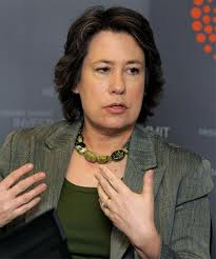SANTA MONICA, Calif, (Reuters) – Two leading U.S. economists expressed deep pessimism yesterday that politicians in Washington will be able to strike a deal to rein in America’s soaring national debt.
Sheila Bair, the former chairman of the Federal Deposit Insurance Corporation, and Stephen Roach, a veteran economist at Yale University’s School of Management, also said the Federal Reserve was creating another catastrophic financial bubble with attempts to stimulate the economy through its policy known as quantitative easing.
The two were speaking at a conference on global risks sponsored by the Rand Corporation and Thomson Reuters, at Rand headquarters in Santa Monica, California.

Bair, who stepped down as head of the FDIC in July 2011, said the Federal Reserve’s policy of pumping money into the economy, combined with an unprecedented period of historically low interest rates, was creating “the mother of all bond bubbles.”
Bair said she believed the United States was heading for a financial crash on the scale seen when the housing market collapsed six years ago, but this time because of investors who were looking for higher and riskier returns in other asset classes.
Roach called the Federal Reserve policy of low interest rates and quantitative easing a “ticking time bomb that keeps on ticking.”
The two spoke as congressional leaders in Washington met with Obama to try to find common ground on taxes and spending that will allow them to head off a looming “fiscal cliff” that could push the U.S. economy back into recession.
About $600 billion worth of tax increases and spending cuts begin to kick in on Jan. 1 unless Congress can find a way to replace them with less severe deficit-reducing measures before then.
Bair and Roach both said they believed Congress will find some way to “kick the can down the road” on the question of the fiscal cliff. Neither believes Washington will pass the fundamental structural reforms necessary to deal with America’s long-term debt crisis.





